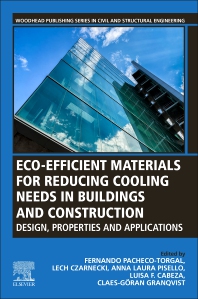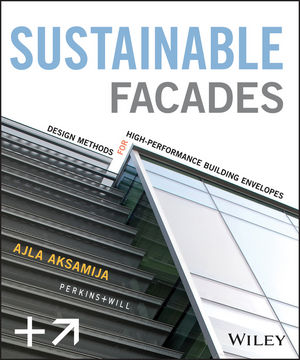Top Five Sustainable Materials to Consider for Your Roof

Society’s movement towards sustainability has impacted the roofing industry significantly. The intent of the sustainability movement is to encourage use and development of environmentally-friendly options. In the roofing area, this is achieved by installation of products providing long-term service with renewability options and cost-effective service. As regulation increases, manufacturers are moving more towards “green” focused products. These products are durable, environmentally friendly and cost-effective.
Below are five sustainable roofing options that architects and developers may consider specifying for future projects.
Clay
Oddly enough, one of the most sustainable roofing products is clay tile. It is made of natural product obtained from clay pits, is highly durable, and recyclable. Natural clay is available in a variety of colors, and manufacturers may add tints and glazing to extend the range of color options. Since clay can be readily formed, then fired to dry and harden the end product, it is an excellent “green” choice.
Two-piece clay tile has been manufactured for more than two thousand years, evolving gradually over the centuries to the profiles and thickness’ seen today. A typical clay tile roof weighs approximately 10 pounds per-square-foot, although if installed with mortar it can weigh significantly more.
Manufacturers have been developing different configurations of clay tile which result in better air movement beneath the tile. Air movement accomplishes at least two purposes. First, it removes moisture from beneath the tile, so underlayment is likely to last longer. Second, it helps to moderate the surface temperature beneath the tile, resulting in lower cooling costs.
Concrete
As a more recent product extension, cement manufacturers have moved into roof tile production. Concrete roof tiles are formable, durable and fire-proof. Due to the nature of concrete, tiles made with cement tend to be thicker than clay, although the weight is similar. Tinting is added to cement in the manufacturing process to produce a wide array of colors, and the molded end result is typically shaped in the common “s,” “w” and “flat” profiles.
Concrete tile is secured to the roof with nails and/or lugs (small projections at the upper bottom side of the tile) that anchor the tile in place against a wood batten strip. There is generally an air gap between the tile and the roof surface below, permitting air movement beneath the tile.
Slate
Slate is also a natural product. Produced in slate pits, slate is a rock that can be “cut” by fracturing along the grain to create thin slabs of stone of roughly uniform thickness. These “slates” are then installed on a flat surface to create a durable and attractive roof system. Slate is waterproof, fire resistant and very durable. If installed properly, it can last hundreds of years.
Slate has been produced for more than a thousand years. In fact, there is a slate roof in England that has been in service since at least the 8th century. There is a natural variety of color and striation within slate, varying from pit to pit, and it can be produced in varying thicknesses and widths.
Metal(s)
Metal has been installed on roofs for centuries. Originally, lead was used for flashing details. In recent decades, with awareness of the dangers of lead poisoning, lead has lost favor in the roofing industry.
However, a couple of other metals are increasingly being used in roofing applications. Copper and zinc stand out for their durability, aesthetically pleasing results and their formability. Being natural products, both will patina over time, the result of chemical reactions between the surface of the product and the environment. When copper is exposed to salty air, it will turn a brilliant green. In a dry climate, such as the Southwest, over time copper turns the color of a dirty penny. With exposure to climatic conditions, zinc will generally turn a softer blue-gray in appearance.
Copper holds up extremely well and has been installed for centuries. Zinc is a more recent addition to metal roofing and has provides excellent service. Both metals are becoming more common in roofing applications, especially in higher-end residential and commercial applications. Other metal products such as steel and aluminum serve well in roofing applications, and at a lower cost point than either copper or zinc.
Polyurethane Foam
For flat roofs, spray polyurethane foam is an excellent option to consider. It consists of two components (resin and polyisocyanurate) joined together with heat and pressure, which react to rise and form a solid surface. Foam has a number of distinct advantages. It is an insulating material, serves as soundproofing, adds rigidity to a structure, is lightweight and very durable. Foam has been used in roofing applications since the 1960s.
Since it is a seamless product, maintenance is fairly simple. A utility knife and a tube of caulk will serve to address most issues that might arise with a foam roof.
Polyurethane foam has one distinct disadvantage—it will break down over time when exposed to the sun. This is overcome by coating the roof with an elastomeric acrylic, silicone or polyurea, all of which block ultraviolet rays from getting at the foam. The coatings can be used to add a variety of colors to the roof system, although the lighter colors tend to add the most to the insulating value of the roof system.
Polyurethane foam can be installed to any thickness in a series of passes called “lifts.” This puts insulation on the outside of the building, blocking heat or cold from passing through to the structure beneath, and vice-versa. No other roofing material has the combination of strength, formability, seamlessness and insulating value provided by spray polyurethane foam.
As society becomes more environmentally-conscious, architects and developers are converting to more “green” products for construction purposes. For more information about “green” roofing materials, be sure to reach out to your local roofing expert.
Looking for a reprint of this article?
From high-res PDFs to custom plaques, order your copy today!








